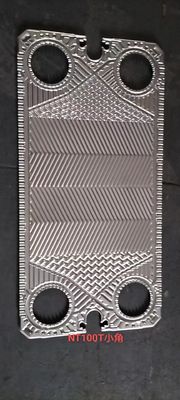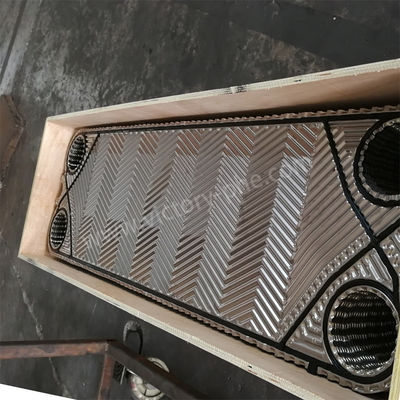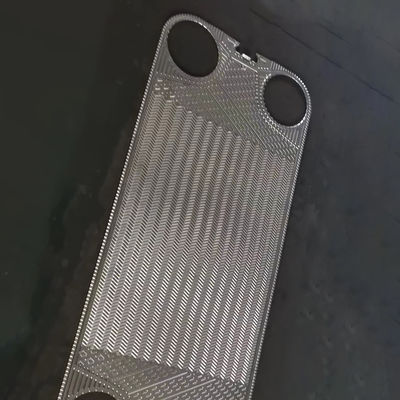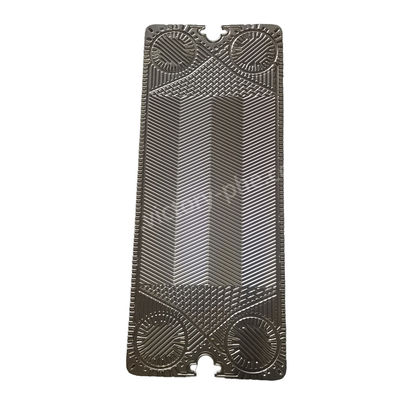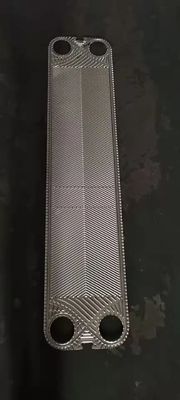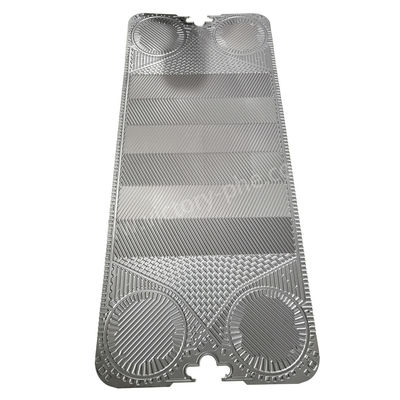Design:
The Herringbone Pattern refers to a design where the surface of the plate takes on a herringbone-like corrugated appearance. This design increases the turbulence of the fluid and thus improves the heat exchange efficiency.
The corrugated arrangement effectively breaks up the boundary layer, enhancing fluid mixing and improving heat transfer.
Pros:
Enhanced heat exchange efficiency: the herringbone corrugated design improves the flow characteristics of the fluid, resulting in more uniform heat transfer.
Reduced thermal resistance: Improved fluid flow reduces thermal resistance during heat transfer.

Coating characteristics:
Powder Coating is a coating that is formed by electrostatically applying a powder coating that is uniformly adhered to a metal surface and then cured by heat.
The coating is typically composed of epoxy, polyester, or other synthetic resins and has excellent corrosion, abrasion, and weathering resistance.
Advantages:
Corrosion resistance: the powder coating effectively resists corrosion and is suitable for chemical and high humidity environments.
Abrasion resistance: Enhanced abrasion resistance of the sheet, prolonging its service life.
Aesthetics: The coating surface is smooth and has a good appearance, suitable for applications that require an aesthetic appearance.
High temperature resistance: the powder coating performs well in high temperature environments, making it suitable for high temperature heat exchange applications.
Areas of application
Chemical industry:
For heat exchange applications handling aggressive chemical media, the powder coating provides additional protection.
Petrochemical:
In petroleum refining and processing, powder coating improves the durability and corrosion resistance of the sheet.
Pharmaceutical Industry:
Suitable for heating and cooling systems in pharmaceutical processes, maintaining good heat exchange performance and corrosion resistance.
Food & Beverage:
In food processing and beverage production, powder coatings help prevent contamination and improve equipment life.
Heating, ventilation and air conditioning (HVAC):
Used in heating and cooling systems in commercial and industrial buildings to improve heat exchange efficiency.
Energy Industry:
In power plants and energy recovery systems to provide efficient heat exchange and enhance equipment durability.
Maintenance and care
Periodic Inspection: Regularly check the condition of the plates and coatings to ensure there is no damage or flaking.
Cleaning: The plates are cleaned regularly according to the characteristics of the fluid and the conditions of use to avoid deposits affecting the heat exchange efficiency.
Repair: If the powder coating is found to be damaged, it needs to be repaired or re-coated in time to maintain its corrosion and abrasion resistance.

 Your message must be between 20-3,000 characters!
Your message must be between 20-3,000 characters! Please check your E-mail!
Please check your E-mail!  Your message must be between 20-3,000 characters!
Your message must be between 20-3,000 characters! Please check your E-mail!
Please check your E-mail! 
